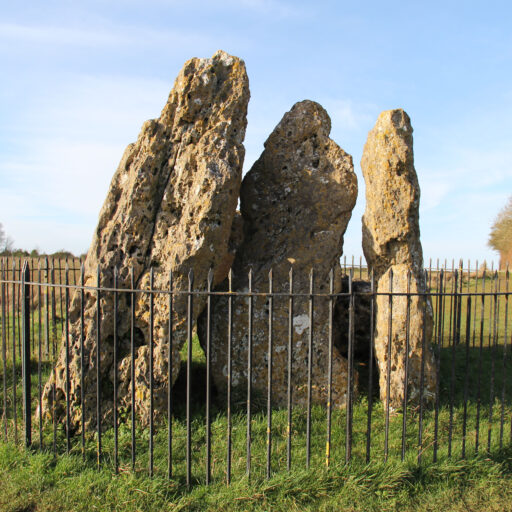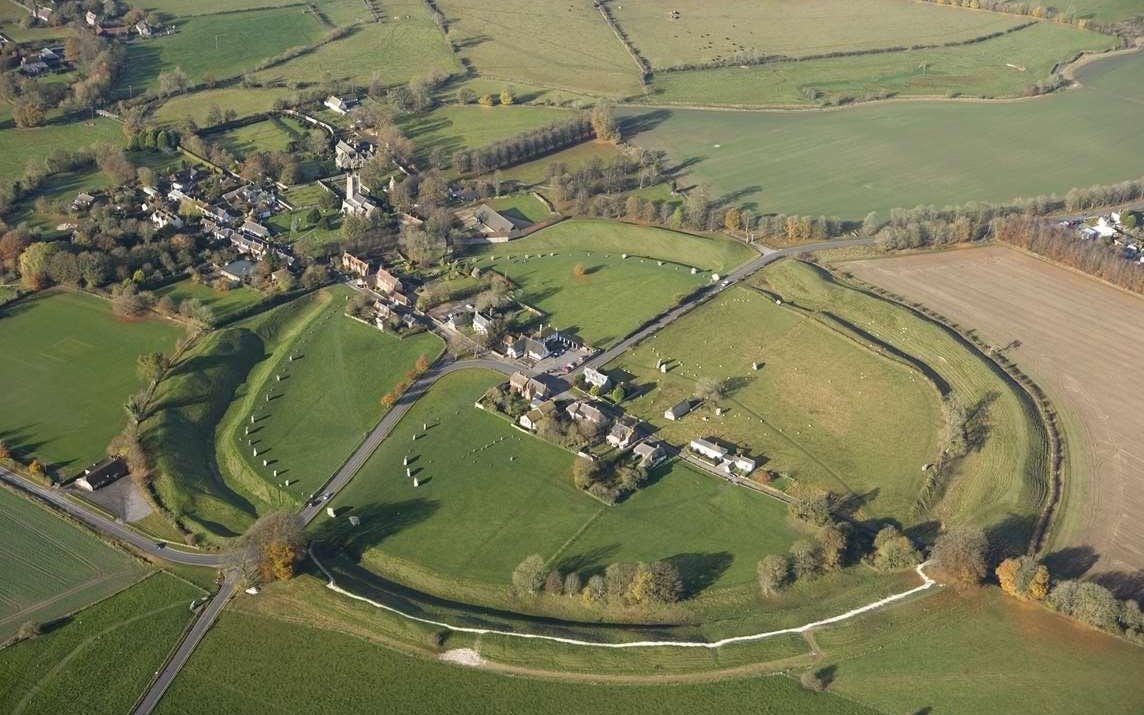Avebury Henge lies in Wiltshire; a sacred area that is dotted with many other Neolithic, Bronze and Iron Age monuments and henges. Avebury henge has stood proudly for millennia, with the first part of construction taking place around 3000BC.

The henge is encompassed by a large earthwork, which is 420m in diameter. It is made up of an outer bank, inner ditch and inner bank, which the stone circle sits on. The banks and ditch have unfortunately been broken by the crossroads that the settlement of Avebury sits on.





The outer stone circle would have originally been made up of around 100 stones, although now less than 30 remain. Many were buried by order of the church during the middle ages, due to the possible revival of paganism during this time. Later on, many of the remaining sarsens were broken up and used for building material for the village in the 17th and 18th centuries. Within the outer stone circle, there are also two smaller stone circles.

The Cove of Avebury sits within the northern inner circle. The Cove originally consisted of three sarsens, with the third sarsen sitting opposite the taller male stone. This was removed around the 18th century and was subsequently destroyed. The Cove was erected around 3000BC, making it the oldest monument of Avebury. The Cove is positioned so that the summer solstice sun rises between the stones, it has also been theorised that the stones are seen as a male and a female; with the tallest of the two representing the man. This is a common theme throughout the stones of Avebury.


Looking closer at both of these sarsens, we can see that the tallest one has what appears to be a mill stone in the middle of it. Could this sarsen have had a previous life and been used to grind wheat? Or, could it be that this was purposefully carved to represent the sun? After all, the sun has been a very important deity to people throughout the ages.
The shorter of the two appears to have a hare at the bottom of the sarsen. There is much folklore surrounding hares, but as they weren’t introduced until 3000 years after the erection of this stone we can surmise that it is a more “modern” carving, perhaps carved by an Anglo-Saxon in preparation for a fertility ritual during the spring equinox. Hares have been loosely associated with the [proposed Anglo-Saxon] God Eostre and later, the celebration of Easter.


That is, if it is even a carving at all. It may just be natural erosion that has made the image of the hare appear. Both of these images on the sarsens are really open for interpretation.





West Kennet Avenue was erected in around 2400BC. Originally, the monument was estimated to have around 100 pairs of stones. By the 18h century, only 72 were still standing as many of the sarsens had been destroyed. Only 27 remain today, with many of these having been re-erected during restoration work whilst the missing sarsens were replaced with concrete bollards.
Looking closer at each pair, one is more pointed in shape whilst the other is taller and has been shaped to be more column like.


The taller sarsen represents the male; whilst the shorter, pointed sarsen represents the female. Each pair of male and female stones stand opposite one another; perfectly balancing one another.
The Diamond Stone is said to walk across the road when the clock strikes midnight, although the reason why is unknown. Perhaps to re-join the sarsens that the road separates it from? Twinkling lights belonging to fairy folk have also been spotted at the Diamond Stone.



The Devil’s Seat sits in one of the south west entrance stones. It is said that you can summon him if you run around the stone counter clockwise 100 times. It has been rumoured that thick black smoke can be seen coming from the stone’s “chimney”. This means that the devil is awaiting your visit, so you can save yourself the run.
It is believed that West Kennet Avenue was used as a ceremonial passage for reaching The Sanctuary. The most intact part of the avenue starts just outside of the stone circle and stops at the foot of Waden Hill, if you climb this you’ll find yourself gazing upon Silbury Hill. If you continue down the original route (now cut in half by the village of West Kennet) that West Kennet Avenue once took, you will find yourself walking in the footsteps of your ancestors to The Sanctuary.
There was also another avenue south west from Avebury called Beckhampton Avenue. Just one sarsen remains today lovingly referred to as Adam. It does not sit alone, but with Eve, the only remaining stone of The Longstone Cove which stands not too far away.

There is no doubt that Avebury and the surrounding area still holds many secrets. Will time ever unveil these, or will they remain firmly in the grasp of the sarsens?


Comments
One response to “Avebury Stones”
Great blog post. I always like reading about the Avebury stones.